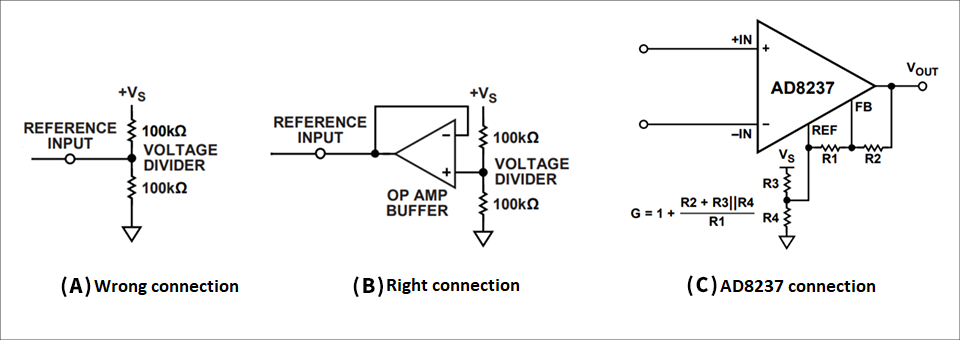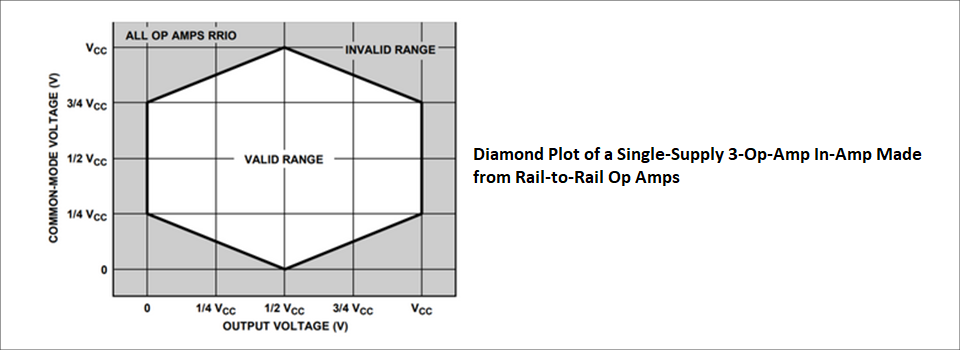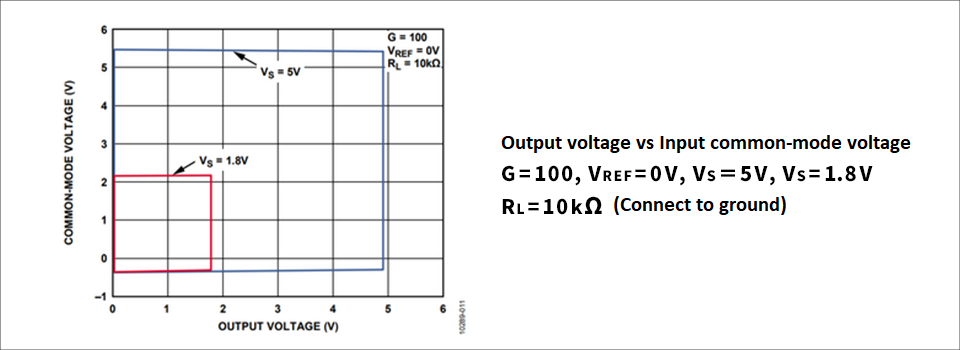Low consumption high precision instrumentation amplifier AD8237 that doesn't suffer from common mode voltage

When designing an instrument amplifier, you may be careful about the characteristics of the output voltage (VOUT) range that can be achieved against the input common mode voltage (VCM) and processing method of the REF terminal, but sometimes we find it difficult to identify the characteristics by overlooking the rules. Analog Devices' AD8237 is an instrumentation amplifier that was developed to avoid such oversight and design margin problems.
What are the features of the AD8237 instrumentation amplifier?
The AD8237 is a micropower, zero drift, rail - to - rail input / output instrumentation amplifier. Two resistors allow the gain to be set from 1 to 1000 times.
There are two features that are different from general instrumentation amplifiers.
First, it has a reference (REF) terminal with a special architecture.
Second, the use of an indirect current feedback architecture allows for ideal diamond plots at high gain settings.
These two features simplify circuit design using the AD8237 instrumentation amplifier.
REF terminal with special architecture
The REF terminal is a convenient terminal that determines the output voltage based on the REF terminal that is equipped with any instrument amplifier.
In a typical instrument amplifier, the REF terminal must be driven with low impedance. Therefore, the impedance is usually made low by buffering with an operational amplifier or the like after resistance division [Figure 1 - (B)].
It should be noted that, if the circuit is driven by resistor division as shown in Fig. 1 - (A), the balance of the subtracter circuit is lost due to this voltage division resistor, and as a result, the in - phase noise rejection ratio of the instrument amplifier is reduced, resulting in poor gain accuracy.
The REF terminal of the AD8237 has a special architecture. Therefore, even if the potential of the REF terminal is determined by resistance division, performance is not impaired.
If the gain is high, it is also possible to adjust by directly connecting a semi - fixed resistor. This reduces the number of buffer op amps required from the instrument amplifier circuit to the REF terminal.
The offset voltage of the AD8237 is minimal, but offset adjustment is also possible here.

Figure 1 : Instrument Amplifier Reference Pin Connection Method
Diamond plot
Figure 2 shows the achievable output voltage (VOUT) for a given input common mode voltage (VCM). Because this shape is a hexagon, Analog Devices calls this diagram a diamond plot.
The instrumentation amplifier appears to be independent of the input in - phase voltage, but when the input in - phase voltage approaches the supply voltage, the internal amplifier is saturated even if the input and output voltages are within range.
For simple op amp circuits, this input common - mode voltage range and output voltage are the only factors that limit the headroom. However, since the instrumentation amplifier uses a combination of two or three operational amplifiers, it is necessary to consider the combination of each input range, output range, and headroom restrictions such as internal nodes.
These ranges are represented by a diamond plot and should be used within the white area labeled VALID RANGE in Figure 2.
The problem is more difficult, especially in low - voltage and single - source applications, where the diamond plot is much smaller and the operating range is limited.

Figure 2 : Diamond Plot (Source : ADI : Common Mode Voltage Range of Instrumentation Amplifier : Diamond Plot)
AD8237 Diamond Plot
The AD8237 is one of the few instrumentation amplifiers that can be matched to an ideal diamond plot in most configurations.
When the gain is set to a large value (G = 100) as shown in the graph condition in Fig. 3, the diamond plot of AD8237 is a simple square.
The AD8237 with such a diamond plot characteristic can fully amplify a small signal even if the common mode voltage is equal to or slightly greater than the supply voltage.

Figure 3 : AD8237 Diamond Plot (Source : AD8237 Datasheet)
Summary
In the circuit design using the instrumentation amplifier, the circuit scale can be reduced by using AD8237, because the REF terminal can be configured without using the buffer operational amplifier.
Another benefit is the use of an indirect current feedback architecture that provides an ideal diamond plot for high gain settings, allowing the design to use a wide range of output voltage (VOUT) versus input common mode voltage (VCM).

